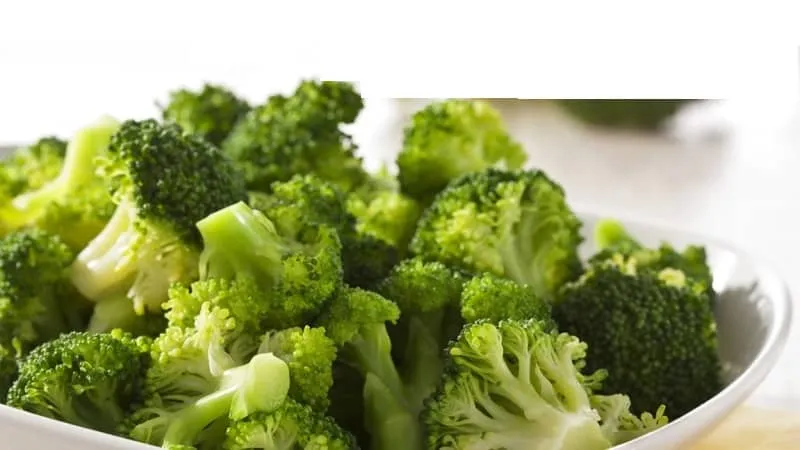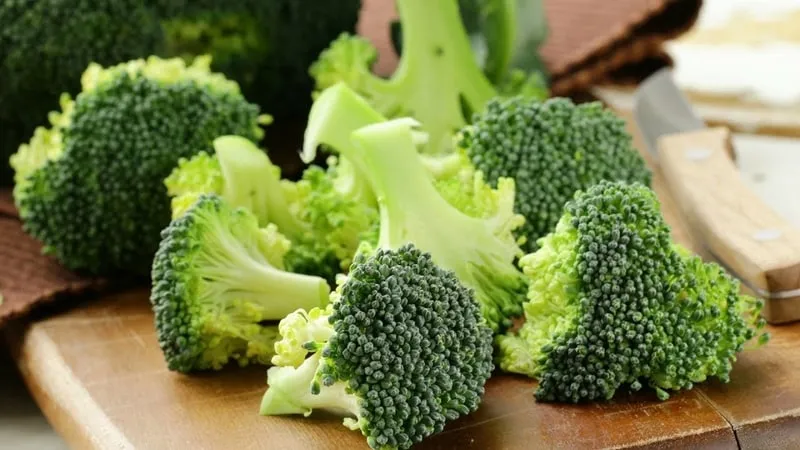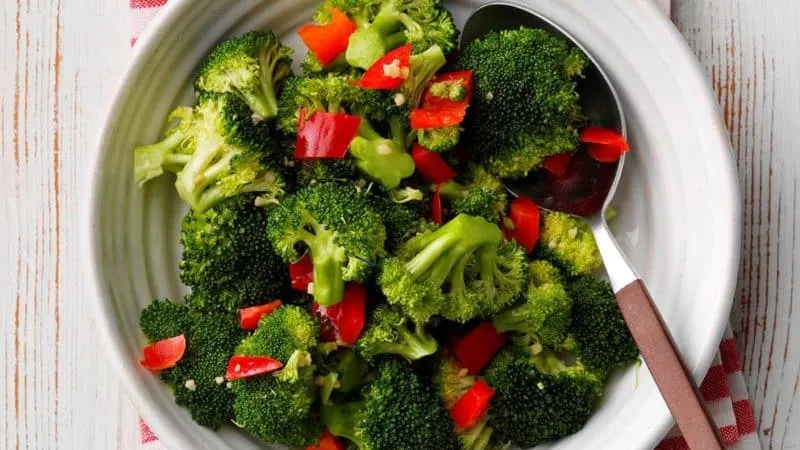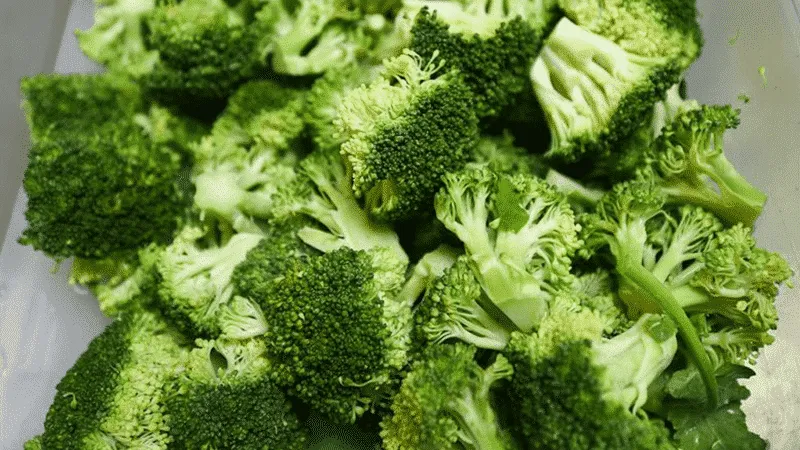Broccoli is a popular ingredient in dietary nutrition. This green vegetable is nutritious and delicious, and it can be used to prepare a variety of low-calorie dishes — meaning you can lose weight without feeling hungry. You can eat broccoli for weight loss in almost any quantity, as long as it’s prepared correctly and paired with other healthy foods.
Table of contents
Can You Lose Weight with Broccoli?
A broccoli-based diet is highly effective. In just 5–6 days, you can lose up to 8 kg of excess weight. If you stick to the diet for the full 10 days, you may lose 10–12 kg.
How does this weight loss happen? Daily consumption of green cabbage:
- removes excess salts, helping to eliminate water retention and reduce swelling;
- stabilizes hormonal balance due to its phytohormones;
- boosts metabolism and improves digestion;
- supports liver function;
- helps cleanse the body of parasites.

Can You Eat Broccoli at Night?
If you don’t have gastritis, severe gastrointestinal disorders, pancreatitis, or a rare cabbage allergy, you can eat broccoli at any time — day, evening, or even before bed.
If you feel excessively hungry in the evening, snack on steamed or boiled broccoli, adding a few slices of carrots, zucchini, or fresh leafy greens.
If the hunger is intense and low-calorie plant-based foods aren’t enough, try adding some avocado to your salad or soup. This kind of dinner will not only boost metabolism and aid weight loss but also improve skin and hair health.
Important! The only downside of eating broccoli at night might be increased gas production. To ease digestion, steam or bake it for evening meals. Raw broccoli is best consumed during the day.
Can You Gain Weight from Broccoli?
Broccoli prepared in any way contains no more than 40 kcal per serving. Even if you add a bit of cheese or cottage cheese to your "green diet," weight loss will continue.
Gaining weight on this diet is nearly impossible — unless you pair your soup or salad with cake or buttered bread.
Nutritional Value and Composition

This vegetable is rich in vitamins, minerals, plant-based protein, and fiber — which kickstarts metabolism and helps detoxify the intestines. Broccoli contains:
- 6% protein;
- 1% fat;
- 2% carbohydrates.
Its high plant-based protein content keeps you full and prevents overeating. Additionally, it provides vitamins B1, B2, B6, C, K, and A.
Broccoli also contains manganese, phosphorus, calcium, magnesium, selenium, and sodium, as well as zinc, copper, and iron. Pregnant women are often advised to include it in their diet due to its folic acid content.
Broccoli’s glycemic index is just 32, making it ideal not only for weight loss but also for liver health and diabetes management.
Note. Broccoli has only 40 kcal per serving.
It also contains isothiocyanates and sulforaphane — powerful antioxidants that help remove toxins and heavy metals from the body.
Benefits for Weight Loss
Beyond weight loss, broccoli has other advantages over typical diet vegetables:
- improves cartilage health;
- enhances skin elasticity;
- strengthens teeth and protects against cavities;
- has anti-parasitic properties.
For women, long-term broccoli consumption (over 10 days) helps balance hormones, clear skin, and improve overall well-being.

Sample Broccoli Diet Plan
In a short-term diet, broccoli is the main ingredient. It can be paired with beans, rye bread, oats, some fruits, leafy greens, and fish.
Example of a balanced 5-meal daily plan:
- Breakfast: Salad with 100 g boiled beans and 100 g broccoli, dressed with olive or flaxseed oil (no salt). Add a slice of whole-grain bread. The next day, replace bread with 100 g oatmeal cooked in water and a small piece of butter.
- Mid-morning snack: 200 g of low-sugar fruits or berries (avoid bananas unless necessary — if feeling dizzy, have half a banana and 1–2 tangerines).
- Lunch: Fish or vegetable broth soup with broccoli, beans, or seasonal veggies, plus a piece of chicken breast with a green salad.
- Afternoon snack: A glass of unsweetened kefir or yogurt.
- Dinner: A protein source (fish, chicken, lentils, or beans) with steamed broccoli and green beans.
By rotating these foods, you can follow this diet safely for up to two weeks.

How and What to Pair It With
Broccoli can be prepared in various ways:
- steamed;
- boiled;
- baked;
- stewed with other vegetables or grains.
Raw broccoli should be limited to 70 g per day, finely chopped in salads.
It pairs well with beans, baked fish, or chicken breast. Any vegetables (except potatoes) can be added. For extra flavor, soups can be topped with a spoonful of low-fat cream or sour cream.
Detox Day
Once a week, have a detox day — liquid-only meals, such as broccoli and carrot soup, unlimited green salads, and at least 2 liters of water.
Recipes
There are countless ways to prepare broccoli, as it works well with almost any vegetable, meat, or cheese.
The most popular weight-loss dishes include smoothies, vegetable soup, and salads.
Smoothie
Ingredients for a breakfast smoothie:
- 70 g broccoli;
- 50 g spinach;
- 100 g cucumber;
- 200 ml mineral water;
- a pinch of ground ginger.
Blend all ingredients until smooth. Enjoy for breakfast, as a snack, or in the evening.
Creamy Soup
Ingredients:
- 70 g broccoli;
- 50 g carrots;
- 30 g pumpkin;
- 20 g low-fat cream;
- salt and pepper.
Boil vegetables until soft, blend with broth, stir in warm cream, and garnish with herbs.
Green Salad
Ingredients:
- 100 g steamed broccoli;
- 100 g leafy greens;
- 1 large cucumber;
- 50 g boiled beans.
Chop and mix everything, dress with olive oil, lemon juice, and a pinch of salt. Serve as a light lunch or dinner, optionally with fish.
Testimonials and Results

Feedback on the broccoli diet is mostly positive, though individual experiences may vary.
Conclusion
If you have no dietary restrictions, a broccoli-based diet will not only help you lose weight but also boost energy, improve skin and nail health, and reduce bloating. Just remember to balance your meals and avoid extreme calorie restriction beyond two weeks.







